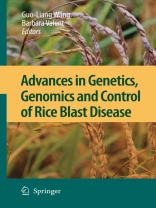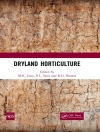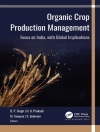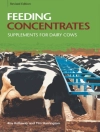Rice blast, caused by the fungal pathogen Magnaporthe grisea, is one of the most destructive rice diseases worldwide and destroys enough rice to feed more than 60 million people annually. Due to high variability of the fungal population in the field, frequent loss of resistance of newly-released rice cultivars is a major restraint in sustainable rice production. In the last few years, significant progress has been made in understanding the defense mechanism of rice and pathogenicity of the fungus. The rice blast system has become a model pathosystem for understanding the molecular basis of plant-fungal interactions due to the availability of both genomes of rice and M. grisea and a large collection of genetic resources. This book provides a complete review of the recent progress and achievements on genetic, genomic and disease control of the disease. Most of the chapters were presented at the 4th International Rice Blast Conference held on October 9-14, 2007 in Changsha, China. This book is a valuable reference not only for plant pathologists and breeders working on rice blast but also for those working on other pathysystems in crop plants.
表中的内容
Current Status and Future Prospects for Research on Blast Resistance in Rice (Oryza sativa L.).- Current Status and Future Prospects for Research on Blast Resistance in Rice (Oryza sativa L.).- Pathogen Genetics, Genomics and Molecular Biology.- The PMK1 MAP Kinase Pathway and Infection-Related Morphogenesis.- Surface Sensing and Signaling During Initiation of Rice-Blast Disease.- Studies on Autophagy Machinery in Magnaporthe oryzae.- Secretion Property and Gene Expression Pattern of a Putative Feruloyl Esterase in Magnaporthe grisea.- Functional Analysis of Two Laccase Genes in Magnaporthe grisea.- The Significance of Nitrogen Regulation, Source and Availability on the Interaction Between Rice and Rice Blast.- Protein Chips and Chromatin Immunoprecipitation – Emerging Technologies to Study Macromolecule Interactions in M. grisea.- Cellular and Molecular Analyses of Biotrophic Invasion in Rice Blast Disease.- Isolation and Functional Analysis of Putative Effectors from Magnaporthe oryzae Using Integrated Genomic Approaches.- Searching for Effectors of Magnaporthe oryzae: A Multi-Faceted Genomics Approach.- Developing Resources for Analysis of Secreted Proteins from Magnaporthe oryzae.- Host Defense Genetics, Genomics, Molecular Biology.- Functional and Evolutionary Analysis of the Pi2/9 Locus in Rice.- Understanding the Co-evolution of the Rice Blast Resistance Gene PI-TA and Magnaporthe oryzae Avirulence Gene AVR-PITA.- Genetic and Molecular Analyses of Blast Resistance in a Universal Blast Resistant Variety, Digu.- Map-Based Cloning and Breeding Application of a Broad-Spectrum Resistance Gene Pigm to Rice Blast.- Rac GTPase and the Regulation of NADPH Oxidase in Rice Innate Immunity Response.- Rice Guanine Nucleotide Exchange Factors for Small GTPase Os Rac1 Involvedin Innate Immunity of Rice.- Role of Ethylene, Abscisic Acid and MAP Kinase Pathways in Rice Blast Resistance.- Bacterial Determinants and Host Defense Responses Underpinning Rhizobacteria – Mediated Systemic Resistance in Rice.- Pathogen Population and Disease Control.- World Population Structure and Migration of the Rice Blast Fungus, Magnaporthe oryzae.- Examination of the Rice Blast Pathogen Population Diversity in Arkansas, USA – Stable or Unstable?.- Studies on the Complementary Differential Varieties and Local Physiologic Races of Magnaporthe grisea in Sichuan Province.- Blast Race Monitoring for Stable Use of Blast Resistance in Rice.- Pathogenicity-Related Compounds Produced by Blast Fungus.- An Unprecedented Outbreak of Rice Blast on a Newly Released Cultivar BRS Colosso in Brazil.- Effect of Magnaporthe grisea on Seed Germination, Yield and Quality of Wheat.- Identification and Use of Resistance Genes and Breeding Strategies.- Field Resistance Expressed when the Pi-ta Gene is Compromised by Magnaporthe oryzae.- Resistance Genes and Their Effects to Blast in Korean Rice Varieties (Oryza sativa L.).- Genetic Analysis of Resistance Against Bacterial Leaf Blight and Leaf Blast Disease in the Japanese Rice Cultivar Asominori.- DNA Marker Analysis of Blast Resistance Genes Pib and Pita in IRRI-Bred Rice Varieties Comparing with Gene Estimation by a Differential System.- Genetic Characterization of Universal Differential Variety Sets Developed Under the IRRI-Japan Collaborative Research Project.- Sequential Planting as a Method of Screening of Durable Resistance to Rice Blast in Korea.- Development of a Package of 20 Varieties for Blast Management on Upland Rice.- Rice Blast in India and Strategies to Develop Durably Resistant Cultivars.- Breeding Rice Cultivarswith Durable Blast Resistance in Colombia.- What it Takes to Achieve Durable Resistance to Rice Blast?.- Bioinformatics and Database.- Magnaporthe grisea Oryza sativa (MGOS) Interaction Database: Community Annotation.- ARCHIPELAGO: Towards Bridging the Gap Between Molecular and Genetic Information in Rice Blast Disease Resistance.












